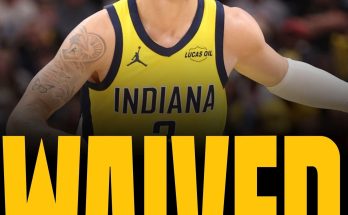The Miami Hurricanes and the Florida State Seminoles share one of the most intense and storied rivalries in college football. Since their inaugural meeting on October 5, 1951, the two teams have faced off nearly 70 times, with Miami leading the all-time series 36–33 as of 2024turn0search14. This rivalry has been defined by high-stakes games, dramatic finishes, and a fierce competition for supremacy in the state of Florida.
Origins and Early Years
The rivalry began in 1951 when the Miami Hurricanes defeated the Florida State Seminoles 35–13. However, it wasn’t until the 1980s that the rivalry truly began to heat up. During this period, both teams became national powerhouses, regularly competing for top rankings and bowl appearances.
The 1980s: Rise to Prominence
In the 1980s, both Miami and Florida State were consistently ranked among the top teams in the nation. The games between the two schools during this era were often pivotal in determining the national champion. One of the most memorable games occurred on October 3, 1987, when Miami defeated Florida State 26–25 in a game that had significant national championship implications. Miami’s victory helped propel them to their second national championship.
The 1990s: The “Wide Right” Era
The 1990s saw the rivalry reach new heights of drama and intensity. Florida State kicker Gerry Thomas missed a field goal attempt to the right with less than a minute left, and the top-ranked Seminoles lost to the second-ranked Hurricanes, 17–16. This miss, known as “Wide Right I,” was the first in a series of narrow defeats for Florida State in the rivalry.
The following year, on October 3, 1992, Florida State had another chance to defeat Miami but missed another field goal attempt to the right, resulting in a 19–16 loss to the defending national champion Hurricanes. This game became known as “Wide Right II.
The “Wide Right” saga continued into the new millennium. On October 7, 2000, Florida State kicker Matt Munyon missed a field goal attempt to the right, sealing a 27–24 victory for Miami. This game, dubbed “Wide Right III,” was particularly controversial as Florida State was ranked higher by the BCS and selected to play in the national championship game despite Miami’s higher ranking in both the AP Poll and Coaches Poll.
The 2000s: A Shift in Power
The early 2000s marked a shift in the balance of power between the two programs. Miami continued to perform at a high level, while Florida State experienced a decline. In 2002, Miami secured a narrow 28–27 victory over Florida State, with the Seminoles missing another field goal attempt to the left, leading to the term “Wide Left I.” The following year, in the 2004 Orange Bowl, Florida State had another opportunity to defeat Miami but missed yet another field goal attempt to the right, resulting in a 16–14 loss for the Seminoles. This game was referred to as “Wide Right IV
The 2010s: A Period of Transition
The 2010s were a period of transition for both programs. Florida State experienced a resurgence under head coach Jimbo Fisher, culminating in a national championship in 2013. However, the rivalry game against Miami remained highly competitive. In 2016, the game became known as “The Block at the Rock,” when Florida State’s DeMarcus Walker blocked an extra point attempt by Miami, securing a 20–19 victory for the Seminoles.
In 2017, Miami ended a seven-year losing streak to Florida State with a dramatic 24–20 victory, highlighted by a last-minute touchdown pass from quarterback Malik Rosier to wide receiver Darrell Langham. This win marked a significant moment in the rivalry, signaling Miami’s return to prominence.
The 2020s: Renewed Rivalry
The rivalry between Miami and Florida State has continued into the 2020s, with both teams striving to reclaim their former glory. In 2024, the Hurricanes secured a 36–14 victory over the Seminoles, extending their lead in the all-time series to 36–33 . The game was highlighted by Miami’s Heisman Trophy candidate quarterback, Cam Ward, and a strong defensive performance.
Cultural Impact
The Miami–Florida State rivalry extends beyond the football field. It has become a cultural phenomenon, with both fanbases passionately supporting their teams. The games are often marked by intense atmospheres, with fans from both sides filling the stadiums and creating an electric environment. The rivalry has also produced numerous memorable moments, from dramatic last-second victories to controversial officiating decisions, all of which have contributed to its status as one of college football’s premier rivalries.
The Miami Hurricanes vs. Florida State Seminoles rivalry is a testament to the passion and tradition of college football. From its early beginnings in 1951 to the present day, the rivalry has been characterized by competitive play, dramatic finishes, and a deep-seated desire to be the best in the state of Florida. As both programs continue to evolve, the anticipation for each new chapter in this storied rivalry remains high, ensuring that the Miami–Florida State matchup will continue to be a highlight of the college football season for years t


